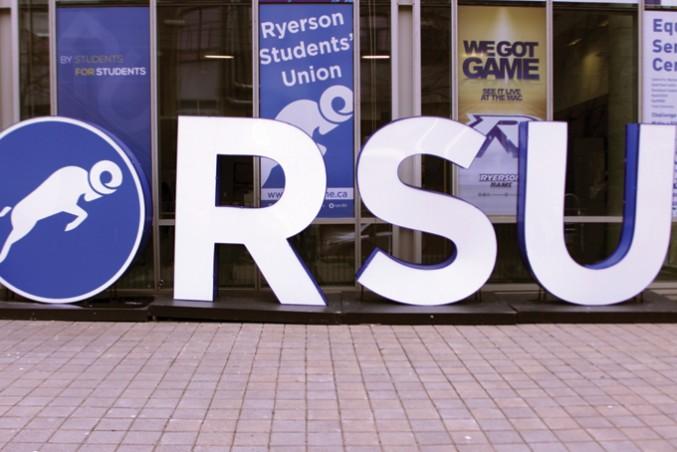By Jacob Dubé
With recent debate surrounding the Ryerson Student Union’s (RSU) affiliation with the Canadian Federation of Students (CFS)—the RSU’s current national and provincial advocacy group—the possibility of finding advocacy elsewhere can’t be ignored.
The two main alternatives are The Canadian Alliance of Student Associations (CASA) and the Ontario Undergraduate Student Alliance (OUSA). Both perform similar tasks to the CFS, but have different priorities and methods. Here’s how they measure-up:
Services
The CFS lobbies both the provincial and federal governments regarding post-secondary-related issues. According to Gayle McFadden, national executive representative at CFS-Ontario, the CFS “builds movements.” The organization focuses on lowering tuition fees nationally, and bringing forward sexual assault policy legislation on campuses in three provinces.
They also provide money-saving services for students, such as their International Student ID Card (ISIC), Handbook Service and National Student Health Network. “The services of the CFS—like the ISIC—bring daily discounts to students’ spending, but the progressive work [that] students undertake to challenge discrimination on campus also changes lives,” McFadden wrote in an email. However, RSU vice-president education Victoria Morton, said that these provided services are not necessary and can be found for cheaper elsewhere. The RSU has already replaced services like the CFS’ health network, and handbook services.
“There’s services like web hosting and student saver cards that you can already access for free, so I don’t think we need to have this national organization creating those for us. And it’s not even that I think that, I know that we don’t need a national organization doing that,” Morton said.
CASA and OUSA exclusively focus on lobbying their respective levels of government. In late October the federal government announced it would be increasing the minimum income a graduate needs to make before having to pay back student loans from $12,000 to $25,000—a change that CASA has previously lobbied for.
“We’d advocated for 30, but 25 was a big, big positive,” Michael McDonald, executive director at CASA, said. According to McDonald, they don’t provide any other services like the CFS because they want to let the respective student unions concentrate on their own priorities.
“CASA has seen it’s members task it with using the fewest resources to accomplish their ends at the federal level and leaving the rest of those resources to each student union to be able to use on the things that they do really well,” McDonald said.
Membership fees
The Ryerson Students’ Union (RSU) currently pays the CFS a levy of $16.24 per student, amounting to roughly half-a-million dollars. Additionally, they pay $50,000 from their budget for their membership.
CASA’s fees fluctuate based on inflation and student enrollment. Ryerson students would pay $2.49 each, the maximum fee being $53,029 per year in total.
OUSA’s membership fee is a flat rate of $2.99 per student, which at Ryerson would total just under $100,000.
If Ryerson were to go with CASA/OUSA, students would be paying $5.48 each for both memberships.
“It costs less money to do direct lobbying. They’re not spending as much money on printing or travel costs. They’re more efficient per dollar,” Morton said.
Leaving
In order to leave the CFS, a petition—not initiated by any executive from the students union—and signed by 20 per cent (eventually 15) of the school’s population must be circulated. The CFS then vets the signatures, and a referendum is called.
McDonald considers CASA to be an “easy in, easy out” organization.
“It’s critical that the organizations that are engaging with CASA and are paying fees really want to be there,” he said.
A CASA member would have to notify the organization that it wants to hold a vote to leave, and if it’s successful, they are separate. According to McDonald, the whole process takes 90 days.
Similar to CASA, OUSA President Jamie Cleary says it would also take 90 days to leave their organization, except the students union can make the decision in any way they like, and must pay the rest of the year’s fees in full.
“It’s student dollars funding the organization, we want to make sure you’re getting what you’re wanting out of OUSA,” Cleary said.











DS
The problem with OUSA is, historically, it has a reputation for being more of a self-promotion body for its staff and board than anything else if the number of OUSA EDs and chairs who end up being hired by the government is any indication.
Ben DW
At least the CFS screens for best practices environmentally, and ensures swag isn’t made in sweatshops. I’m concerned that OUSA and CASA use sweatshops. Our swag shouldn’t be made of childrens tears and I appreciate that the CFS guarantees this
j
CFS are a crooked organization that hasn’t accomplished anything in making tuition lower. Honestly, it seems as if they would rather focus on social issues.